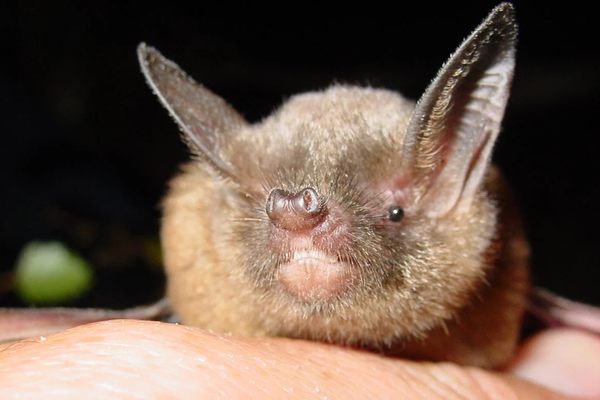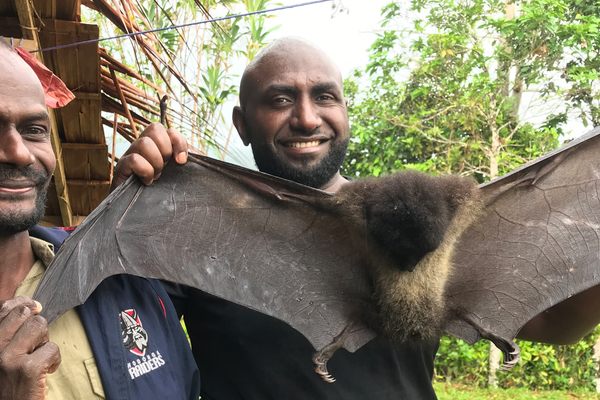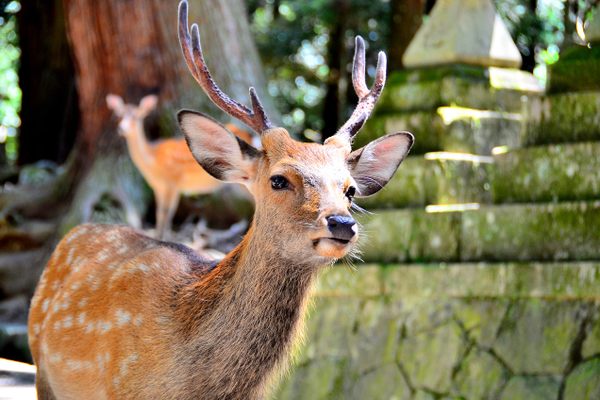
A Year of Spectacular, Adorable, Sometimes a Little Scary Animals
From cute death omens to post-nuclear-disaster predators, these animals captivated us in 2023.
Some animals are really good at hiding. A few have become so elusive that when a rare sighting occurs, they almost seem fantastical or mythical. Despite silky furs, miniscule size, or bubblegum shells, these creatures aren’t just tall tales. And we have photos to prove it.
Unfortunately, many animals—these cryptic ones and others—have not escaped our seeming determination to wipe out whatever we find. Through the challenges of climate change, habitat loss, invasives, and more, groups of determined scientists are working to protect many of these dwindling species. These researchers and advocates brave harsh conditions, sharp teeth, and sleepless nights to study and conserve creatures that range from occasionally terrifying to downright adorable.
Here are some of our favorite animal stories of the year.
How the Enchanting, Elusive Pink Fairy Armadillo Became One Scientist’s Obsession
by James Hall
It sounds like a figment of imagination, but despite its storybook name (and people’s skeptical inquiries on Google), the pink fairy armadillo does, in fact, exist. With a pink shell covering white fur, this species is a rare and shocking sight in the arid Mendoza region of Argentina. The animal lives in burrows, so even scientists have a hard time locating them. Read how an enamored conservation biologist became roommates with one of the evasive creatures and cohabitated with its strange, piercing shenanigans in her living room.

How a Lone Researcher Faced Down Millions of Army Ants on the March in Ecuador
by Frank Nischk
Army ants are not to be messed with. The relentless soldiers change entire landscapes of rainforest, and their unremitting march brings food and death to dozens of other species, including birds, butterflies, frogs, spiders, beetles, and wasps. While one entomologist works at a field station in Ecuador, he hears the unmistakable sound of a small-bodied but mighty army advancing. His only choice is to face the swarm, as hundreds of vicious ants start to pour through the floorboards of his rainforest office.
The Chernobyl Disaster Created an Unexpected Predator Paradise
by Wojciech Mikołuszko
When a nuclear reactor melted down in Ukraine and caused the 1986 Chernobyl disaster, the smoke from the accident billowed into neighboring Belarus. Swaths of contaminated land were evacuated, and eventually became a radio-ecological reserve. But because Belarus had closed the area to international scientists, it was largely unknown just how much the land had changed over the decades. A recently published and translated study shows how apex predators such as wolves, lynxes, and the occasional bear have returned to the area—but behave differently compared with their fellows in surrounding areas.

The Smallest Wild Cat in the Americas Is Also the Cutest Bad Omen
by Roxanne Hoorn, Editorial Fellow
With its big eyes, racoon-like tail, and tiny size—smaller than a house-cat—the kodkod might just be the most adorable wildcat in the world. Unfortunately, it’s also a death omen. For Mapuche and other locals in Chile, seeing the kodkod could mean a terrible fate for a family—or at least their chickens. Conservation groups are working on changing that narrative for the vulnerable species. Luckily, its spotted coat, bushy fur, rounded ears, and overall cuteness factor could help change the fate of the smallest wildcat in the Americas.
Studying Australia’s Feisty Northern Quolls Requires Beef Chum and Backpacks
by Gemma Tarlach, Senior Editor/Writer
Just about every wild creature might be trying to kill you in Australia’s Outback. But scientists still must trek through a sweltering hot island full of crocodiles, snakes, biting ants, and dingoes, in search of a small marsupial called a quoll. Even the quoll, though, is feisty, with lots of sharp teeth. Some have described their bite as a piercing needle, and they’ve even punched through one worker’s fingernails. Still, the researchers work to conserve their species, tempting them with dog food and then fitting tiny backpacks onto the foot-long marsupials (while trying to avoid their mouths). Most surprisingly, the scientists have learned that the fierce mammals mate, sleep be damned, until the very end.
The Mystery of the Headless Millipedes
by William von Herff
Some sneaky animal is killing hundreds of millipedes every summer on Tuckernuck Island in Massachusetts. The murdered bugs have been showing up on this island since 1940—and they’re all missing their heads. But like an intricate murder mystery, a whole group of scientists keep trying to finger the culprit and continue to be thwarted. Since millipedes are full of poisonous glands, the uncaught serial killer clearly seems to understand that only their heads and first five body segments can be eaten. Cozy up to this strange mystery of the decapitated millipedes, as scientists interrogate the possible perpetrators one by one.

Brazil’s Most Adorable Anteater May Be a New Species
by James Hall
On Brazil’s Atlantic Coast, a tiny creature hides among the mangroves. It’s called a silky anteater, and its fur certainly looks soft and shiny enough to live up to the name. Its puppet-like arms, which are surely shaped for grasping tree branches, look ready for a hug; the image is even more convincing when they’re waking up from a nap, as is frequently the case. Scientist Flávia Miranda studies the sleepy critter, which may be a new species, and works with locals to restore its homelands.
The Race to Save the Pekapeka-Tou-Poto, New Zealand’s Unique Bat
by Monica Evans
Bats behave a bit differently in New Zealand. The pekapeka-tou-poto hang not in caves, but in lichen-covered trees in North Island. And these bats don’t just fly, they also crawl around on the ground in search of food. Since their numbers have been dwindling due to humans, rodents, and cats, scientists are working to study and protect them. The researchers capture the bats in hanging bags in order to clip a bit of fur for DNA testing, and then tag the animals to track how they’re doing. It’s not an easy task to catch a small, squirming creature that bites through gloves … but someone has to do it.































Follow us on Twitter to get the latest on the world's hidden wonders.
Like us on Facebook to get the latest on the world's hidden wonders.
Follow us on Twitter Like us on Facebook